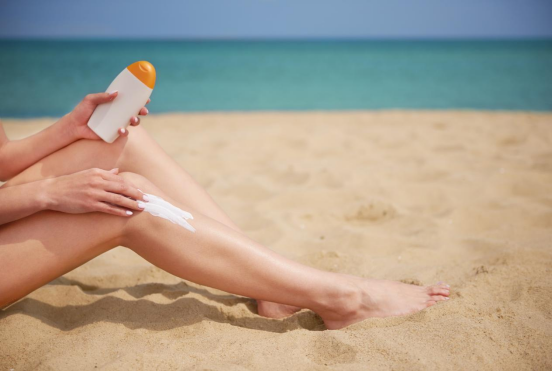The Power of Physical Sunscreen: A Deep Study Its Star Contents

As consumers end up being significantly savvy about skincare, the discussion in between chemical and physical sunscreens remains to be a warm topic. While both offer essential defense against the sunlight's hazardous ultraviolet (UV) rays, physical sunscreens are often admired for their mild yet efficient formula, making them a preferred choice for those with delicate or responsive skin. The key to their success hinges on their energetic components, which create a physical barrier on the skin to shut out UV radiation. This post will explore the world of physical sun blocks, concentrating on their key active ingredients: zinc oxide and titanium dioxide.
Unlike their chemical equivalents, which take in UV radiation and transform it into warmth, physical sun blocks function by sitting on top of the skin to develop a guard that deflects and spreads both UVA and UVB rays. This device is why they are often described as "sunscreens." The main advantage of this technique is its prompt effectiveness upon application and the reduced likelihood of triggering skin irritation, as the active ingredients are not taken in right into the skin.
One of the most popular active ingredient in the physical sunscreen family members is Zinc Oxide. This powerhouse mineral is unique in its ability to provide broad-spectrum security, indicating it successfully secures the skin against the complete spectrum of UVA and UVB rays. UVA rays are in charge of premature aging, consisting of creases and great lines, while UVB rays are the primary root cause of sunburn. By using detailed defense against both, zinc oxide plays a critical function in protecting against sun damage and decreasing the threat of skin cancer cells.
Furthermore, zinc oxide is renowned for its soothing residential or commercial properties. It has actually been utilized for centuries to deal with small skin irritabilities, rashes, and burns, a testament to its mild nature. This makes sunscreens formulated with zinc oxide a suitable selection for people with delicate skin, acne-prone skin, or conditions like rosacea and dermatitis. Its non-comedogenic buildings additionally mean it is much less most likely to block pores, a typical concern for those with oily or mix skin.
The various other principal in the physical sunscreen category is Titanium Dioxide. This normally happening mineral is an additional outstanding ingredient for developing a physical obstacle against UV rays. It is highly reliable at reflecting and spreading UVB radiation, offering durable protection against sunburn. While it provides great security throughout the UVB spectrum, it is generally taken into consideration less effective versus long-wave UVA rays contrasted to zinc oxide.
Therefore, titanium dioxide is typically used in conjunction with zinc oxide in sun block formulations. This mix produces a synergistic result, improving the total broad-spectrum protection of the item. By leveraging the toughness of both components, formulators can develop a sunscreen that uses extensive and reputable protection against the sun's destructive rays. Like zinc oxide, titanium dioxide is likewise mild on the skin and is a suitable choice for those with delicate or easily aggravated skin.
In the last few years, innovations in formulation innovation have actually resolved one of the preliminary downsides of physical sunscreens: the thick, white actors they would certainly often leave on the skin. Modern formulations currently make use of micronized or nano-sized particles of zinc oxide and titanium dioxide, which enables a much more cosmetically stylish application without jeopardizing their protective capacities. This indicates you can appreciate the mild, efficient security of a physical sunscreen without the tell-tale white deposit.
To conclude, physical sun blocks use a trusted and gentle method to safeguard your skin from the sun. Their star ingredients, zinc oxide and titanium dioxide, operate in harmony to create a physical shield that deflects hazardous UVA and UVB rays. With their exceptional security account and suitability for all skin types, specifically delicate skin, physical sunscreens are a powerful force in the fight versus sunlight damage. The following time you are Search the sunscreen aisle, take into consideration the effective, protective, and skin-loving benefits physical sunscreen ingredients of a physical solution.